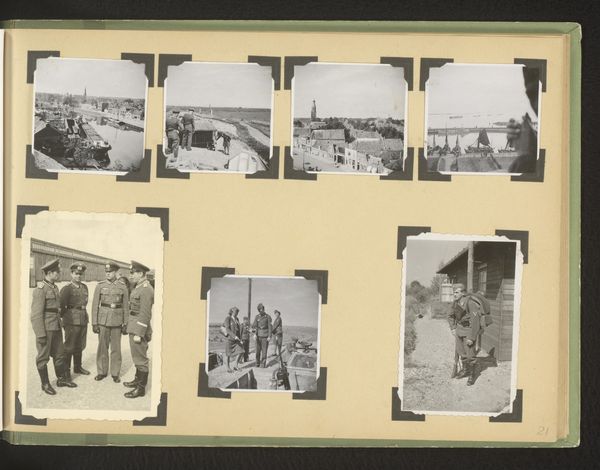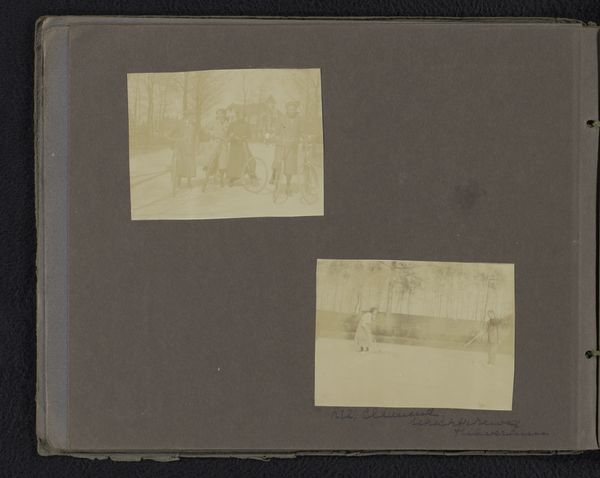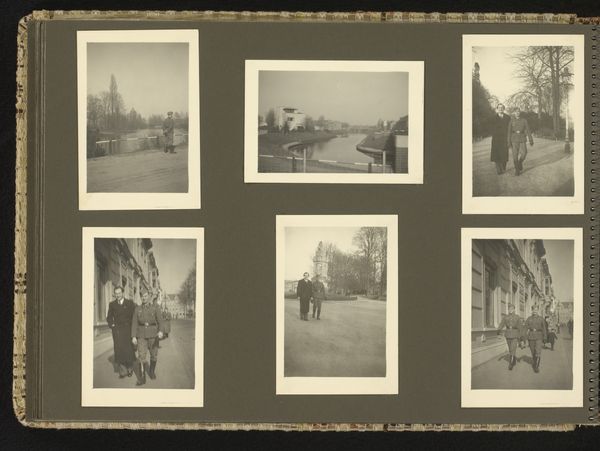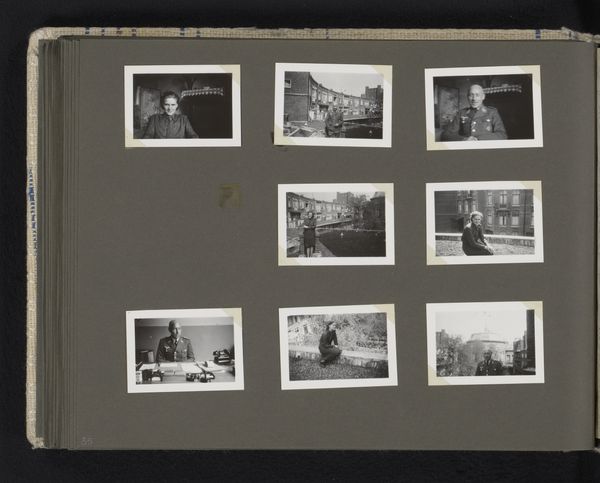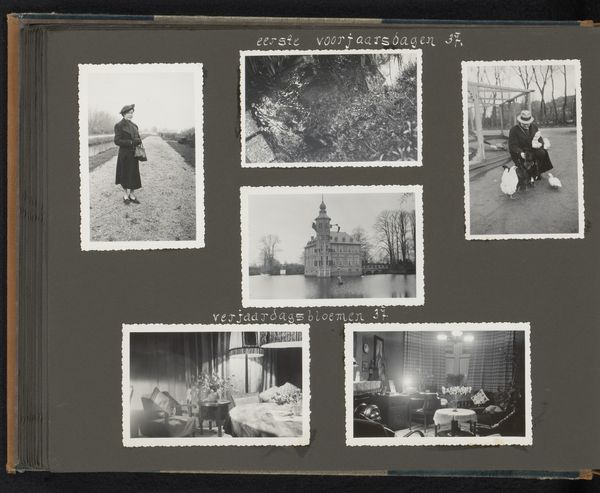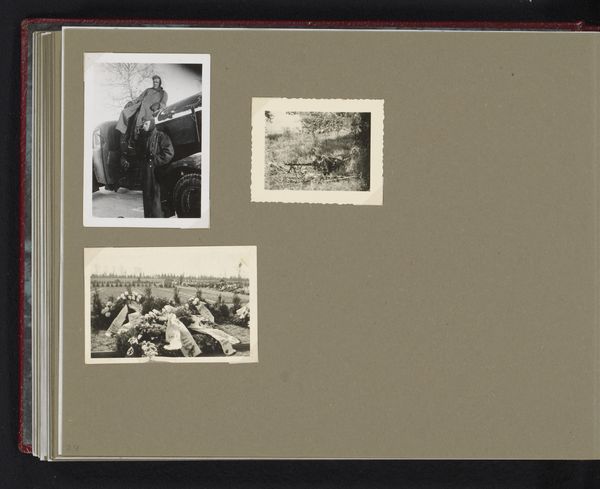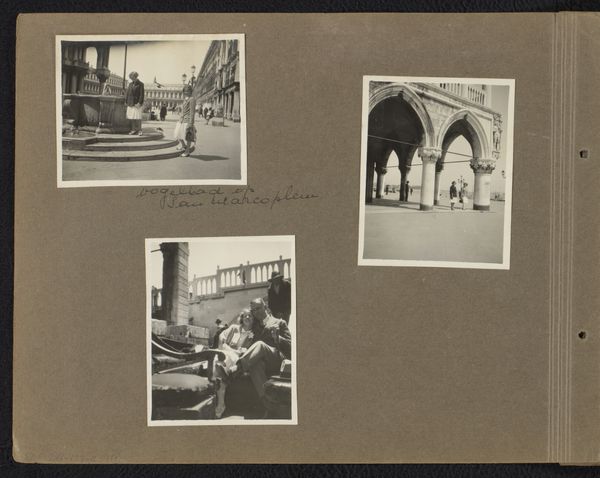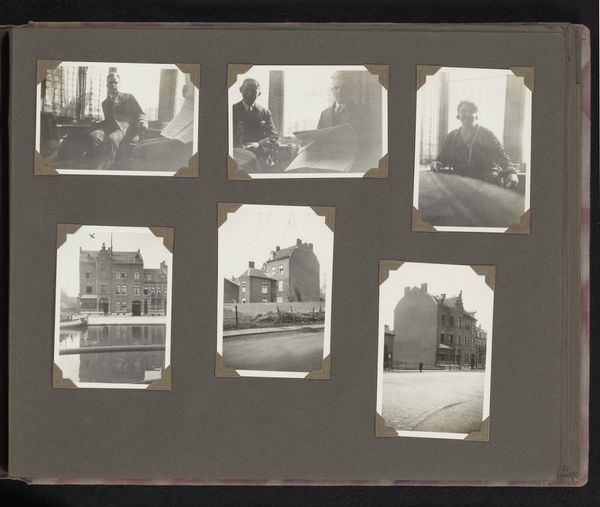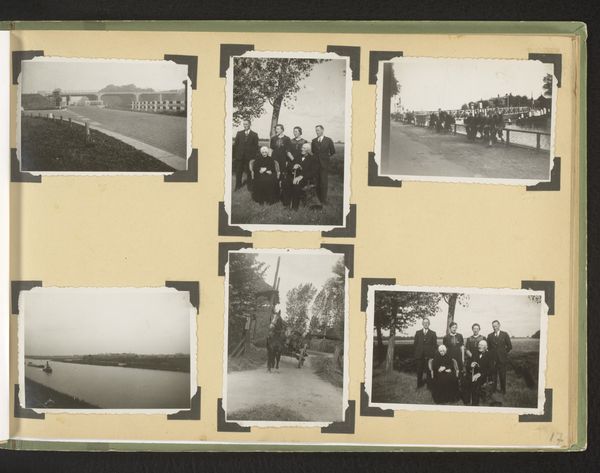
#
aged paper
#
homemade paper
#
sketch book
#
incomplete sketchy
#
hand drawn type
#
personal sketchbook
#
hand-drawn typeface
#
pen-ink sketch
#
sketchbook drawing
#
sketchbook art
Dimensions: height 50 mm, width 80 mm, height 230 mm, width 315 mm
Copyright: Rijks Museum: Open Domain
Curator: This is a page from a sketchbook entitled "Kabels trekken," or "Pulling Cables," created between 1942 and 1943. It appears to be a collection of black and white photographs adhered to aged paper. Editor: The composition immediately strikes me as fragmented. It’s a series of glimpses, held together only by the edges of the page and some kind of loose thematic through line. The monochromatic images give the page an ominous feel overall. Curator: Note how the layout implies a story or sequence, almost like a visual diary. Given the historical context, it certainly invokes strong emotional echoes— the harsh winter, the uniformed figures…they become potent symbols of that era. Editor: Yes, and focusing on "Kabels trekken", the labor suggested by the title seems downplayed by the medium itself. Photographs provide a technological distancing; there is a mechanical coldness. Consider the labor involved versus, say, a drawing capturing the weight and the strain more effectively? The stark contrasts offer a specific reading, perhaps a removed viewpoint. Curator: Perhaps that removal is deliberate. It encourages us to reflect on how historical narratives are constructed, filtered through different lenses and artistic choices. We see the uniforms, but what about the lives within them? What symbols are presented and absent, as they portray cultural meanings. Editor: It’s interesting how something meant to record reality, these photos, becomes abstracted through its placement and presentation on this homemade paper of sorts. We begin to wonder how access and propaganda factor into these images. Curator: The act of arranging and preserving these images in a sketchbook also speaks to cultural memory—an attempt to make sense of events, whether to glorify them or grapple with their legacy, these objects tell stories, and what meanings these photographs communicate is always up for debate. Editor: Definitely. I see that sketchbook page now as both a document of a particular time and a kind of early meditation on the complicated interplay between image, materiality, labor and social circumstance. Thanks. Curator: A good way to contextualize the emotional and historic meanings as well.
Comments
No comments
Be the first to comment and join the conversation on the ultimate creative platform.

